Magnet Sweeper
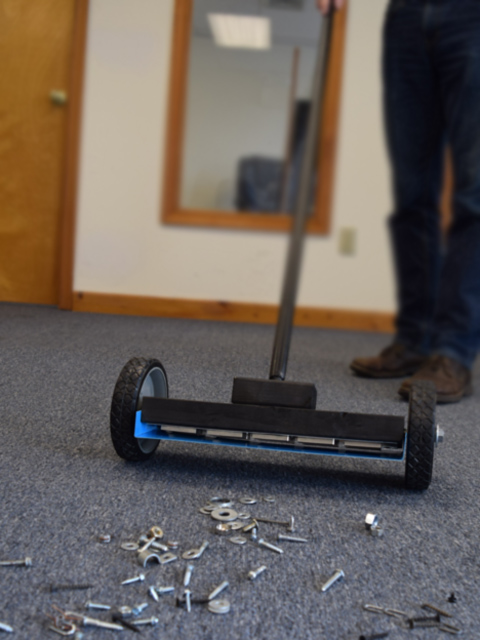
Have you ever dropped a bunch of nails or screws in your yard and thought, "How am I going to find all of these?" Magnets to the rescue!
Magnet sweepers, magnetic brooms and roller magnets use magnets to pick up ferrous materials, like nails, screws, nuts and bolts. They can be quite useful around the house or job site and can help prevent popped tires or damage to machines. The setup is quite simple, so we decided to make one!
How it Works
Before getting into the build and technical details, let's see how it works.
The Build
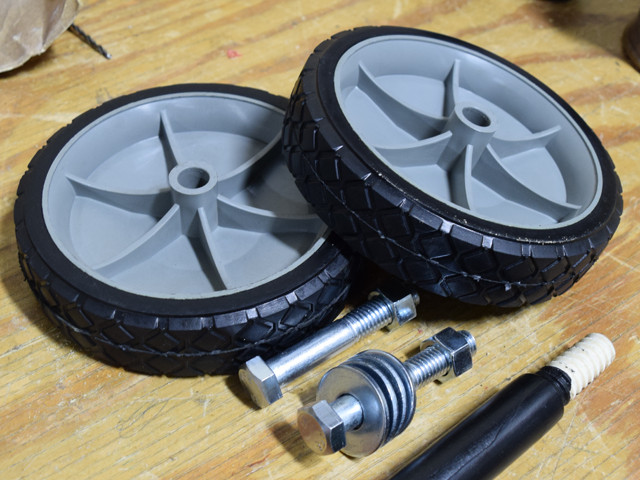
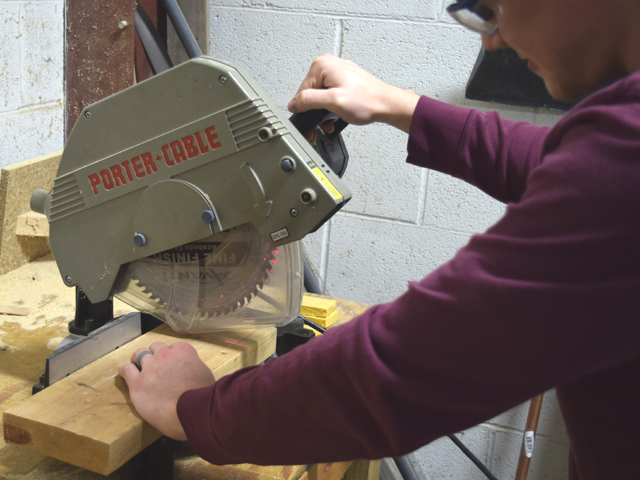
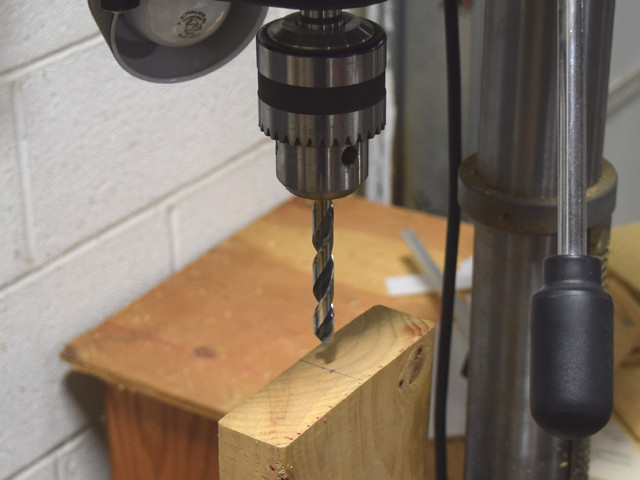
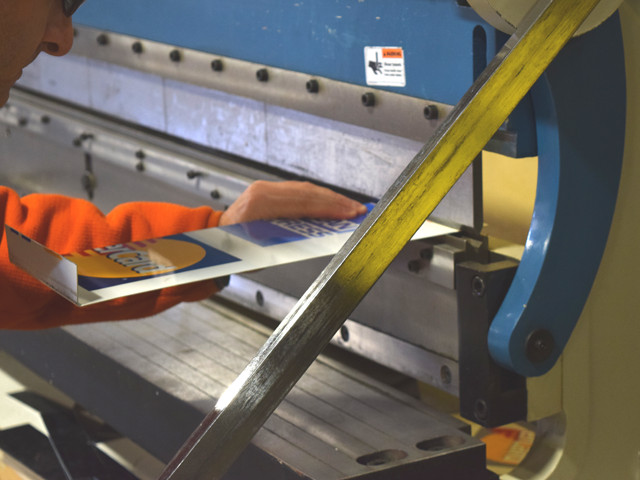
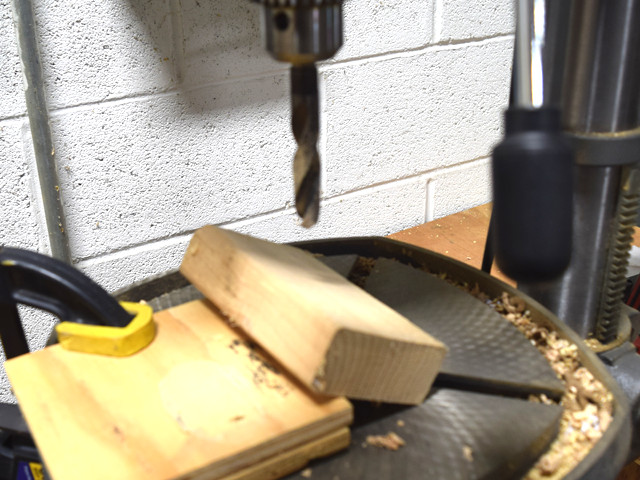
Parts list:
- Lumber
- Plastic wheels (found out our local hardware store)
- Bolts to act as the wheel axle
- Washers for wheel spacing
- Broom handle
- Aluminum cover (you could use any non-ferrous material)
- Sheet steel backing
- Neodymium Magnets - we used 10 BY0X04 block magnets
We knew we needed a removable/hinged cover for the magnets. A cover protects the magnets from damage, but more importantly it creates a way to remove the attracted materials easily. Without a cover, we'd have to remove each nail or screw one by one. That's not something we want to do with rusty junk picked up with a magnetic sweeper!
We used a scrap piece of aluminum sheet metal, bent to fit our sweeper. We screwed the aluminum cover on each end to create a movable hinge.
We attached a thin steel sheet to the bottom of the wood, allowing us to just stick magnets right to it. This made it easier to test out various magnets. Countersunk Magnets can be a better, permanent option.
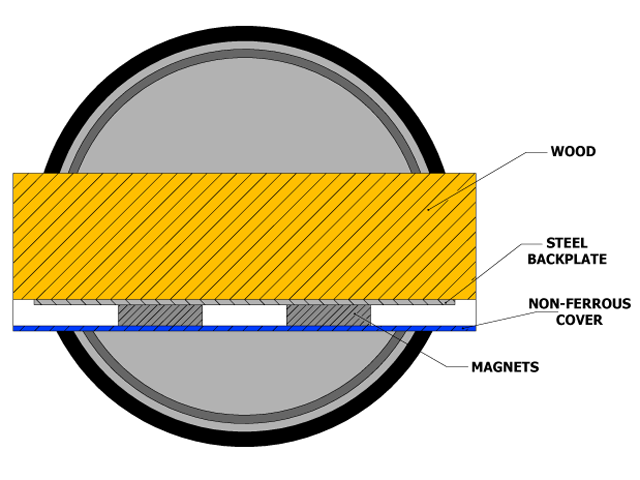
Distance & Size Matters...
We originally used a total of 10 BY0X04 block magnet magnets on our magnet sweeper. This was great for us, but using magnets this large might not be so economical for everybody.
So what magnets could you use to make it more economical? That question comes with a bit of technical preface...
You could use smaller magnets, but they won't reach across the same distance with as much force as larger magnets do. If you decrease the magnet size, you'd also want to decrease the gap between the magnets and the ground. The magnets in our sweeper are about 2" off of the ground. That may not seem like much distance, but our sweeper has trouble picking up tiny steel balls from 2" away!
The strength also depends on the size of the object and the amount of ferrous material in that object. You'll see more pull force to a large, thick steel washer than to a small staple! We talk a bit about this in our previous Magnetic Grates and Magnets vs. Steel articles.
In this video, we show how even very strong magnets won't pick up ferrous objects from far away. They need to be within a few inches.
Which Magnets to Use?
Below is a chart of various magnets we tested.
| Magnets | Pull From 2" Away | Pull From 1" Away | Total Weight Picked Up |
|---|---|---|---|
| BX082CS-N block magnet | Very Weak | Weak | 2.0 oz |
| BX884DCS block magnet | Weak | Good | 6.0 oz |
| BY084DCS block magnet | Decent | Good | 8.0 oz |
| BY0X04DCS block magnet | Strong | Really Strong | 1 lb 3 oz |
| BY0X08DCS block magnet | Very Strong | Too Strong | 1 lb 8 oz |
Get it done with less magnet(s)
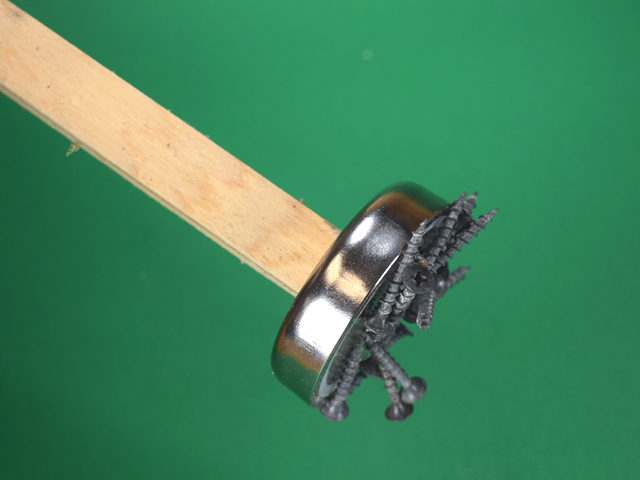
Of course, you could always just screw a strong mounting magnet to the end of a broom handle!
More Technical Info
Besides distance, are there other factors that can help maximize the force from the sweeper? We tested a few different configurations of the magnets to see what worked best.
You can see the three different configurations we tried:
Configuration One: Alternating Poles
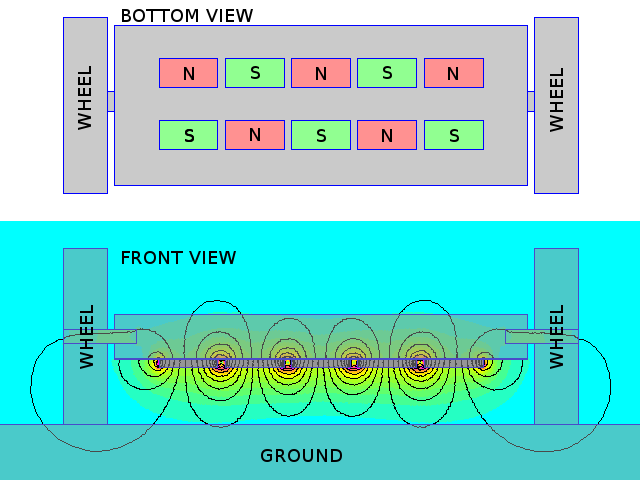
Alternating the poles like this can increase the force to a steel plate but it doesn't do well reaching across a gap. We mention this in our Halbach Arrays article.
Why is this? If we consider the field lines of a magnet a "magnetic circuit", this can help us see why configuration one doesn't perform well at all. The magnet circuit "shorts" itself. The fields flow from one magnet to the next and don't extend very far at all.
An alternating setup can provide more pull force close to the magnets, but at the cost of weaker attraction at larger gaps.
Configuration Two: One row NORTH, one row SOUTH
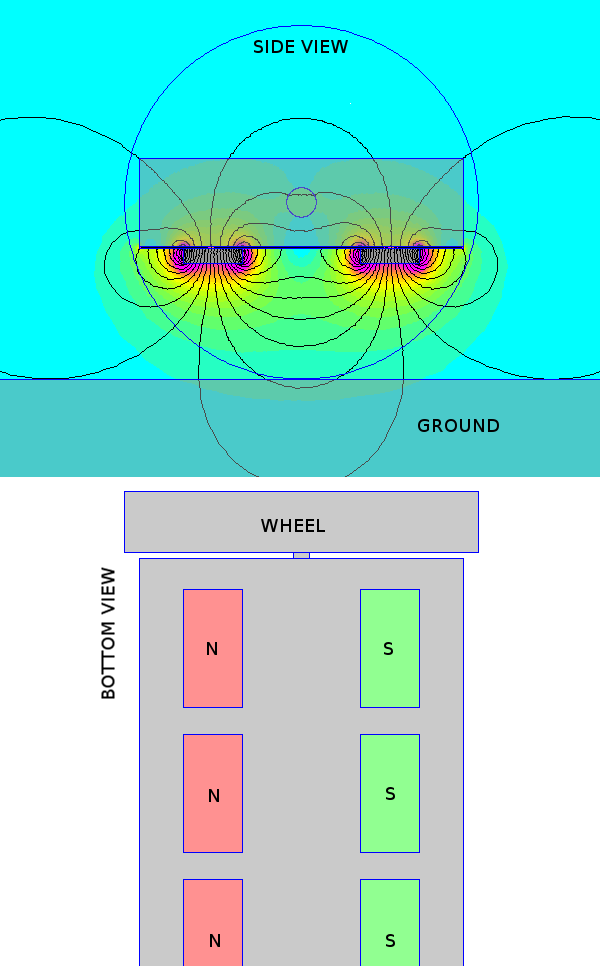
The second configuration placed one row of magnets with their north poles facing the ground and the second row with their south poles facing the ground. This created a strong field in the middle of the rows as the field flows from one row field to the next.
This still is a "short circuit," but it reaches out a lot farther. While the following, "Configuration 3," was better for picking up some objects, this setup worked quite well on our sweeper.
Configuration Three: All NORTH
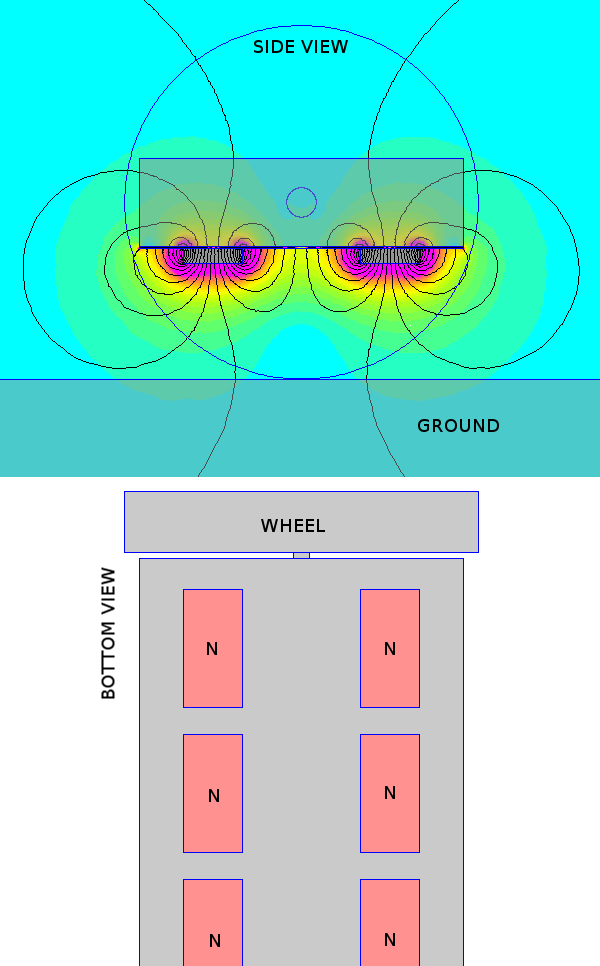
Finally, the last configuration had each magnet with the same pole facing the ground, shown with all north facing down here. This worked very well, and had good reach.
One challenge with this setup can be assembly. The magnets, side-by-side to one another, repel each other in this configuration.
In Conclusion
We thought we would come up with some conclusive data pointing to which configuration worked best but it turns out that it can depend on distance (again). Configuration three measured best at 2" away, while configuration two measured best at 1" away. Configuration one didn't do as well in either tests.
If you decide to make your own, remember that distance, size, and orientation all matter. However you decide to do it, a Magnet Sweeper can help save your tires or your lawnmower blades!
